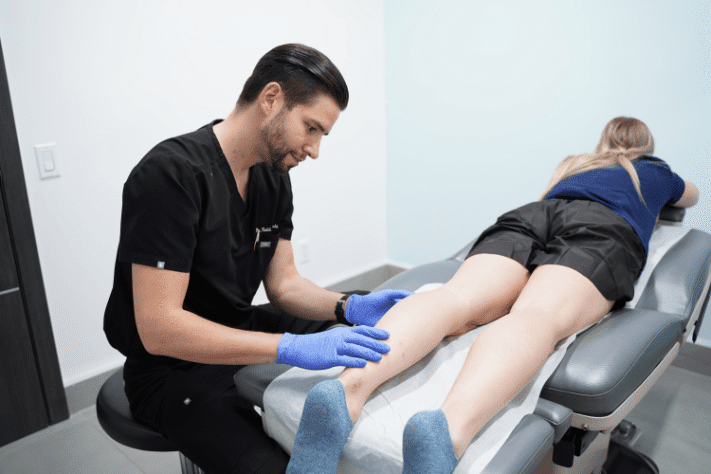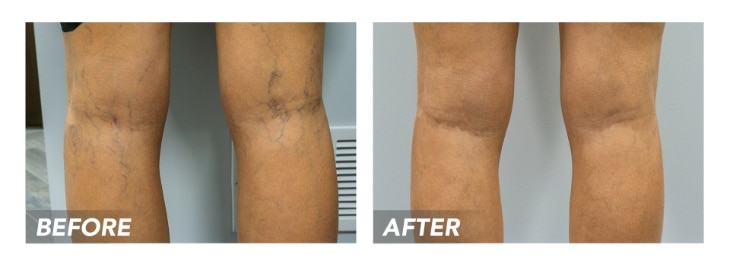What is Sclerotherapy?
Sclerotherapy is a procedure that treats spider veins and small varicose veins. During this procedure, a medicine called a sclerosant is injected into the problematic veins. The sclerosant medicine affects the spider veins’ walls, making them shrink, stick together, and eventually get absorbed by the body. The accumulated blood reroutes to healthier leg veins, restoring optimal blood circulation.
How Does Sclerotherapy Work?
Sclerotherapy treats spider veins and varicose veins, conditions wherein excess blood accumulates in the veins. Sclerotherapy involves injecting a medicine called sclerosant into the affected veins. The sclerosant medicine irritates the veins walls, inducing a chemical reaction that makes them fuse together and shut down. This allows the accumulated blood to flow into healthier leg veins, restoring effective blood circulation to the heart.
During sclerotherapy, the vein doctor raises the affected leg and injects the sclerosant medicine into the spider veins and varicose veins. The vein walls collapse, and the blood within the vein clots, sealing it shut. Over time, the spider veins turn into hardened scar tissues eventually metabolized by the body, making them fade away from the skin’s surface. The accumulated blood freely moves into healthier veins with functional valves, restoring optimal blood circulation. Depending on the number and size of spider veins, the procedure may conclude within 10 to 30 minutes.
After the procedure, your vein doctor will provide some post-treatment guidelines. You should wear compression stockings for a few days to prevent blood from pooling in your veins and aid the recovery process.

Is Sclerotherapy Painful?

The Pros & Cons of Sclerotherapy
Pros of Sclerotherapy
- Non-Surgical: Sclerotherapy is a non-surgical procedure that only involves a few strategically delivered injections. It doesn’t involve complex preparations, hospitalizations, or anesthesia.
- No Downtime: Sclerotherapy doesn’t impact your life at all. The treatment concludes within 30 minutes, following which you can resume most of your daily activities immediately. There’s no need to rest up after the injections. You don’t even have to take a day off work.
Cons of Sclerotherapy
- Not for Everyone: Sclerotherapy isn’t necessarily suitable for everyone, and, in some cases, it may not produce the desired results. Sclerotherapy is best for spider veins and small varicose veins, but it’s not suitable for large veins. If you have large varicose veins or underlying venous insufficiency, the vein doctor may need to combine sclerotherapy with other procedures, such as VenaSeal or radiofrequency ablation.
Not sure if you’re covered?
